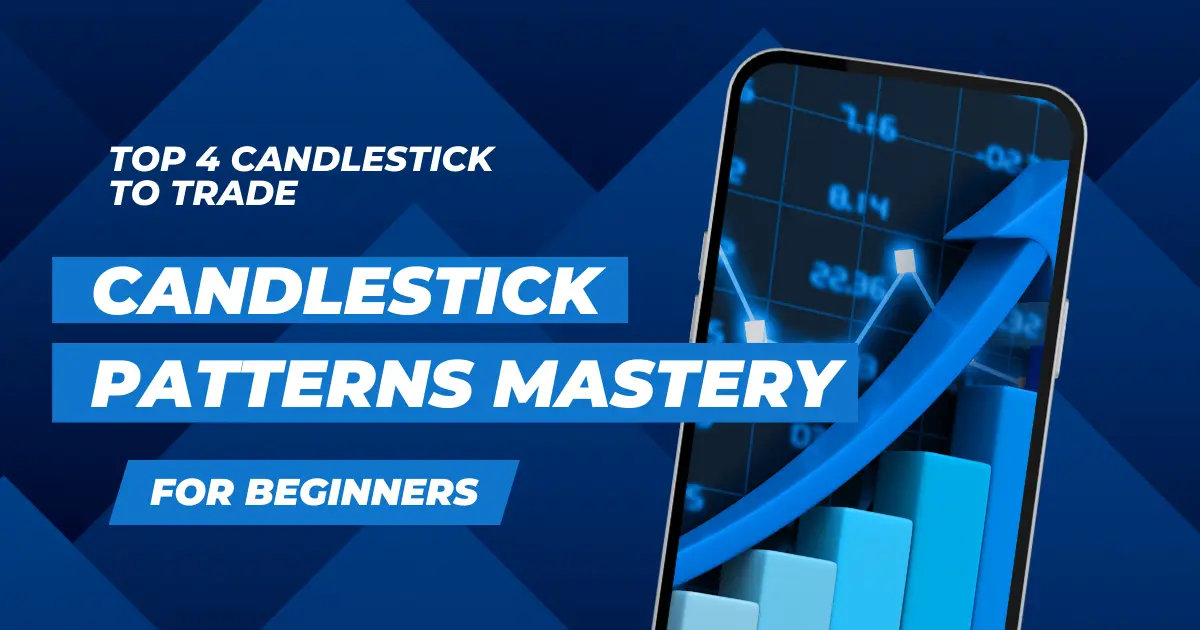Table of content
- Introduction
- Doji Candlestick Pattern
- Hammer and Hanging Man Candlestick Patterns
- Engulfing Candlestick Pattern
- Morning Star and Evening Star Candlestick Patterns
- Conclusion
Introduction:
Candlestick patterns are one of the most powerful tools in a trader’s arsenal, providing valuable insights into market sentiment and potential price movements. Whether you’re a beginner or an experienced trader, understanding and recognizing candlestick patterns can significantly enhance your trading success. In this comprehensive guide, we’ll explore the top candlestick patterns, their descriptions, advantages, trading strategies, and when to avoid or trade them. Let’s dive in!
1. Doji Candlestick Pattern:

- Description: The Doji is a candlestick pattern characterized by its small body and wicks of equal or nearly equal length, indicating indecision in the market.
- Advantages: Signals potential trend reversals or market indecision, offering opportunities for both bullish and bearish trades.
- How to Trade: Wait for confirmation through subsequent price action before entering a trade. For example, if a Doji forms after a prolonged uptrend, wait for a bearish confirmation candle to confirm a potential reversal.
- When to Avoid: Avoid trading Doji patterns in low-volume or choppy markets where the signals may be less reliable.
- When to Trade: Look for Doji patterns at key support or resistance levels, or after significant price movements, to capitalize on potential reversals.
2. Hammer and Hanging Man Candlestick Patterns:

- Description: The Hammer and Hanging Man are reversal patterns characterized by a small body and long lower wick (Hammer) or upper wick (Hanging Man).
- Advantages: Both patterns signal potential trend reversals, with the Hammer forming at the bottom of a downtrend and the Hanging Man forming at the top of an uptrend.
- How to Trade: Enter trades in the direction opposite to the preceding trend once the pattern is confirmed by subsequent price action. For example, after a Hammer forms at a support level, consider entering a long position.
- When to Avoid: Avoid trading these patterns in isolation without confirmation from other technical indicators or price action.
- When to Trade: Look for Hammer and Hanging Man patterns at key support or resistance levels, or in conjunction with other reversal signals for higher probability trades.
3. Engulfing Candlestick Pattern:

- Description: The Engulfing pattern consists of two candles where the second candle completely engulfs the body of the previous candle, signaling a reversal of the prevailing trend.
- Advantages: Provides clear visual confirmation of trend reversals and potential entry points for traders.
- How to Trade: Enter trades in the direction opposite to the engulfing candle once the pattern is confirmed by volume and other technical indicators. For example, if a Bullish Engulfing pattern forms after a downtrend, consider entering a long position.
- When to Avoid: Avoid trading Engulfing patterns in choppy or range-bound markets where the signals may be less reliable.
- When to Trade: Look for Engulfing patterns at key support or resistance levels, or after significant price movements, to increase the probability of successful trades.
4. Morning Star and Evening Star Candlestick Patterns:

- Description: The Morning Star is a bullish reversal pattern that consists of three candles: a long bearish candle, followed by a small-bodied candle (Doji or spinning top) that gaps down, and finally a long bullish candle. The Evening Star is its bearish counterpart.
- Advantages: Offers clear visual confirmation of trend reversals and potential entry points for traders.
- How to Trade: Enter trades in the direction opposite to the prevailing trend once the pattern is confirmed by subsequent price action and volume. For example, after a Morning Star forms at a support level, consider entering a long position.
- When to Avoid: Avoid trading these patterns in isolation without confirmation from other technical indicators or price action.
- When to Trade: Look for Morning Star and Evening Star patterns at key support or resistance levels, or in conjunction with other reversal signals for higher probability trades.
Conclusion:
Mastering candlestick patterns is a crucial skill for traders seeking consistent profits in the financial markets. By understanding the descriptions, advantages, trading strategies, and nuances of each candlestick pattern, you can gain a significant edge in your trading endeavors. Remember to combine candlestick analysis with other technical indicators, risk management techniques, and market fundamentals for a comprehensive trading approach. Happy trading!
Check Other Posts




